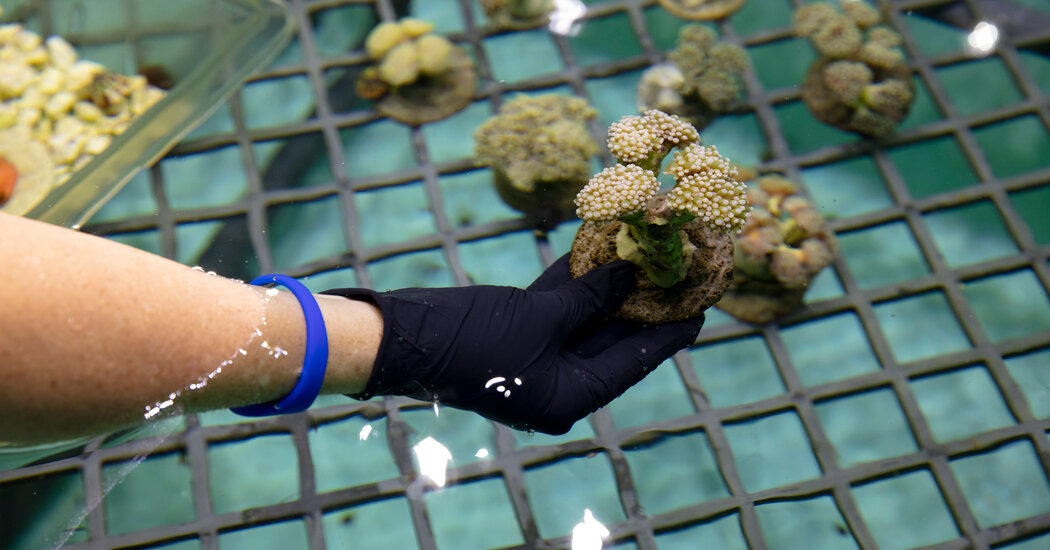With the sea creatures making up a growing share of illegal animal seizures around the world, U.S. officials are working to overcome struggles to safely house them.
You might imagine that when federal wildlife inspectors search for illegally trafficked animal goods, they’d be on the lookout for elephant ivory or tiger skins. But other creatures are frequently being seized at American ports of entry, creatures you perhaps would not realize are animals: corals.
Corals are not plants: They are tiny invertebrates that live in vast colonies, forming the foundation of the world’s tropical reefs. Marine life traffickers hammer and chisel them off reefs in places like Indonesia, Fiji, Tonga, Australia or the Caribbean, then pack them into small baggies of seawater so they can be boxed up by the hundreds and shipped around the world. While most coral is shipped into the United States legally, individuals and wholesalers, growing in number, are being intercepted with coral species or quantities that are restricted or banned from trade, often hidden inside shipments containing legal species.
All over the world, corals, which populate reefs, filter water and provide habitats for numerous fish and other ocean life, are in danger. They face disease outbreaks, bleaching events, ocean acidification and warming seas. Their jeopardy is exacerbated by sediment and nutrient runoff from human activities on land, as well as by cyanide fishing and even trampling by tourists.
Then, where coral remains healthy and unmolested, it may be targeted by traffickers, who sell the animals to aquarium enthusiasts in wealthy countries who may or may not know that the coral has been acquired illegally. Corals were the third-most confiscated wildlife group globally between 1999 and 2018, making up 14.6 percent of all seizures, according to a report from the United Nations Office on Drugs and Crime. The United States is a huge part of that trade.
“The U.S. is the primary market for marine corals,” said Ashley Skeen, a senior wildlife inspector for the U.S. Fish and Wildlife Service. “We’re number one.”
According to NOAA Fisheries, more than 25 coral species are considered endangered or threatened under the Endangered Species Act, and are thus protected by federal law. Internationally, the Convention on International Trade in Endangered Species of Wild Fauna and Flora restricts the trade of around 1,900 coral species, including black corals, red and pink corals, blue corals, stony corals, organ pipe corals and fire corals.
